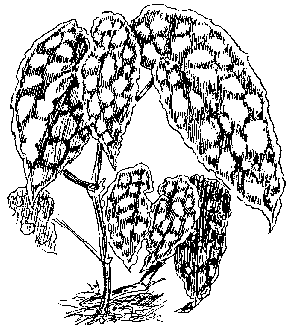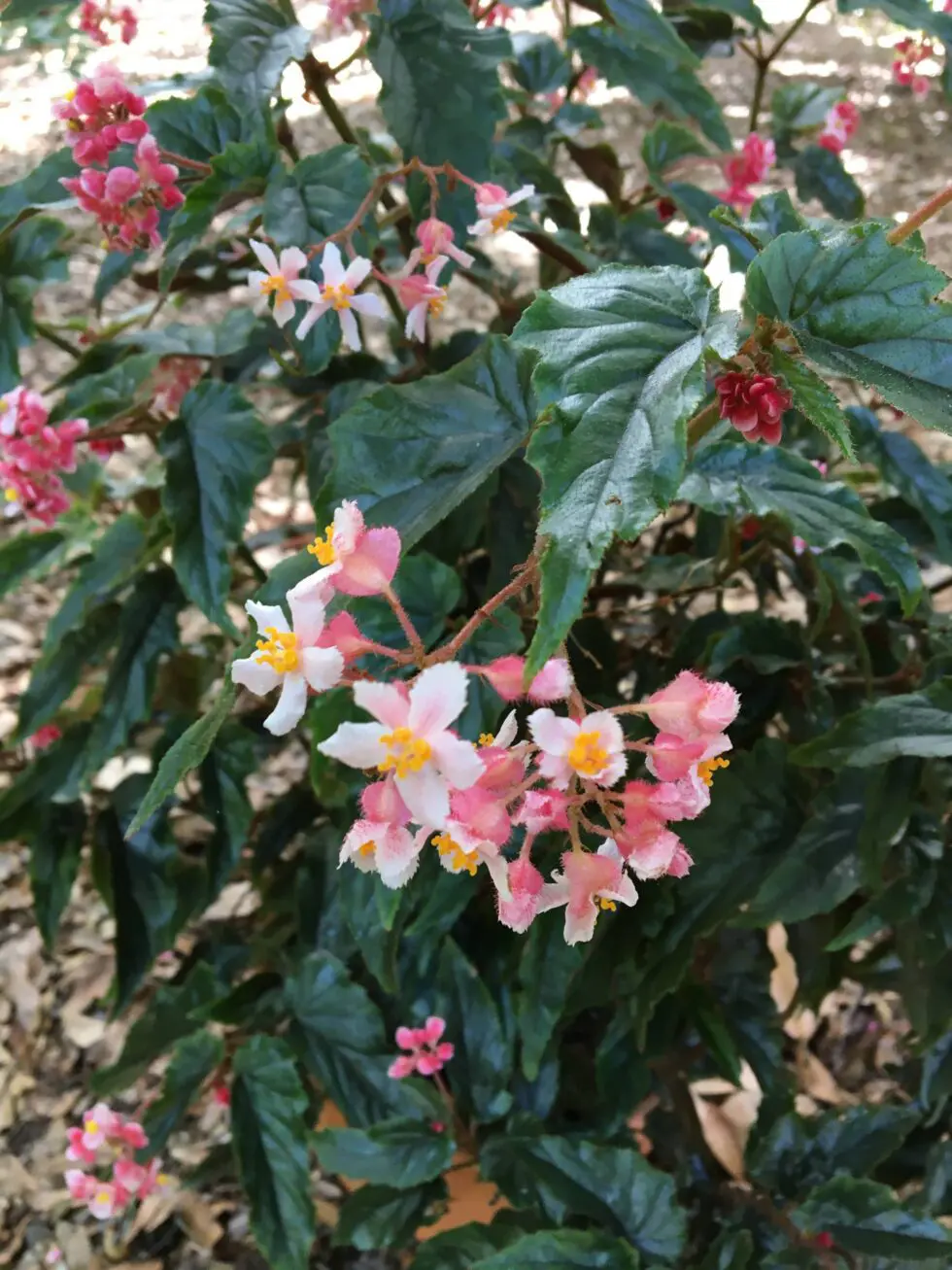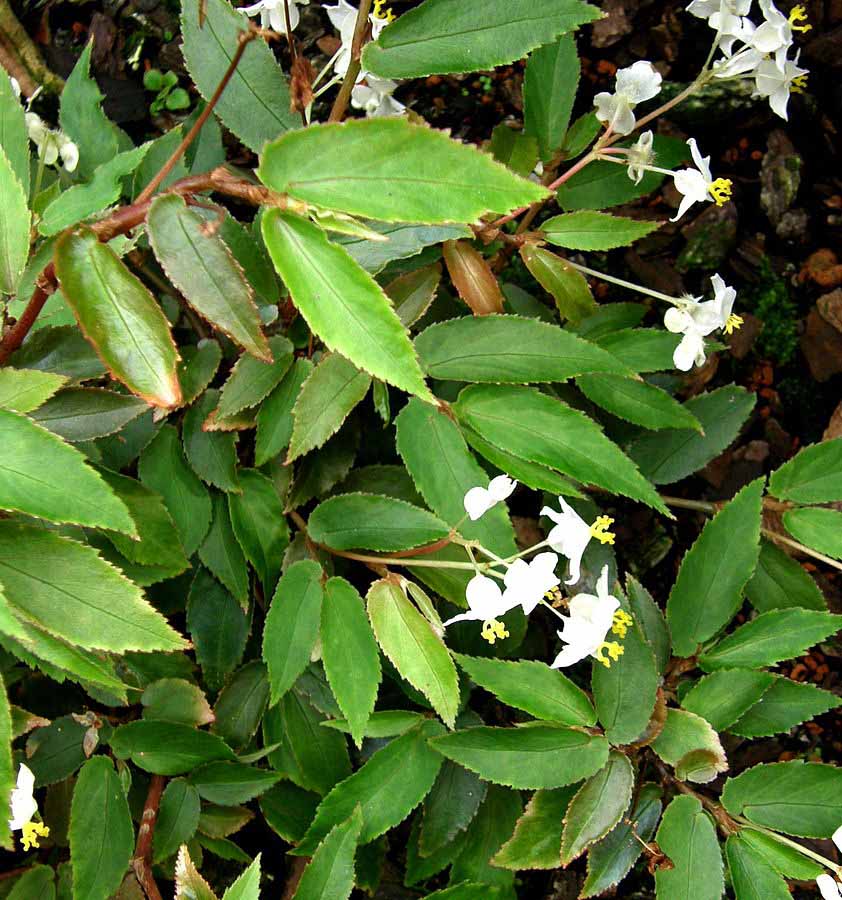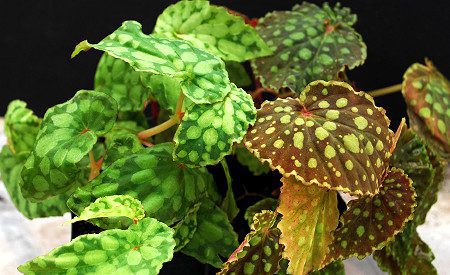Of all the types of begonias, those know as shrub-like are probably the most varied and easiest to grow. They are grown chiefly for their interesting and beautiful foliage, with size, shape, colors, and leaf surfaces and textures in almost endless variety, although, as we shall see, the flowers have some interesting features too.
Many shrubs originated in Brazil and other countries of northern South America, with others coming from Central America, the Caribbean, Mexico; but some are found in places like Africa, Sumatra, the Philippines, and New Guinea.
The predominant feature of the shrubs is that they are bushy or shrub-like, producing shoots from the base and branching freely to form full plants. The stems are flexuous and the internodes deviate in direction, giving a rather zig-zag effect. They may be erect or semi-erect, and many make nice basket plants.
Leaf shapes may be pointed ovals such as B. echinosepala, or elliptical shapes, or peltate and nearly round, like B. peltata. some have compound leaves, like B. luxurians. Sizes vary from tiny, like B. foliosa, to tall, like B. ‘Lee’s Luxurians’. Large-leafed shrubs generally have leaves over 6″ long, and some go up to 18″ under ideal conditions. Begonias ‘Alva Graham’, ‘Braemer’, ‘Gene Daniels’, ‘Lee’s Luxurians’, and ‘Paul-bee’ are examples of those with large foliage.
Shrubs are also found with hairy leaves, and the hairy-leaved classes are divided by leaf width.
The “over 3 inches” class includes some fascinating leaf forms as the species B. fernando-costae, and B. hispida var. cucullifera, the one with little taglike projections on the leaf surface. among the cultivars we have the beautiful B. ‘John Tapia’, ‘Emma Palmer’, ‘Lady Clare’, ‘Metosa’, and ‘Quinebaug’.
Hairy leaved, narrow-leaved varieties include B. ‘Withlacochee’ and ‘Ginny, which certainly illustrate the extreme variety in this group.
Shrubs have not only hairy leafed types, but also felted-leaf examples: species incana, peltata, and venosa and hybrids ‘Fleecealba’ and ‘San Miguel’. Then there are those shrub-like ones with distinctive foliage, with unusual surface or coloring. B. listada and its hybrids ‘Mabel Corwin’, ‘Magdalene Madsen’, ‘Murry Morrison’ and ‘Oh No’ carry a chartreuse streak along the main vein. Other shrubs with distinctive foliage are Begonias chlorosticta, green with yellow-green spots and brown outlining, and exotica, with hot pink spots. Many are compact plants, such as Begonias ‘Jill Adair’, ‘Steve Tapia’ and ‘Midnight Sun’, which has fascinatingly varied leaves in several colors, and the species B. acida, with large, round, puckered leaves. Many of these distinctive foliage types require high humidity.
Shrub-like types show variety also in time of flowering. B. ‘Medora’, a small-leaved, bare-leaved hybrid has pink flowers summer-fall, B. ‘Eunice Gray’ will show its white flowers from February to December, B. obscura flowers in winter, B. echinosepala flowers winter and summer. Many of the small-leaved types are nearly continuous in their blooming, and have pink or red flowers.; examples are Begonias ‘Corbeille de Feu’, ‘Decker’s Select’, ‘Preussen’, and ‘Richmondensis’.
Many of the “shrubbies” have interesting flowers with hairs: B. obscura has white flowers with white hairs, B. ‘Ginny’ has pink flowers with red hairs, B. ‘Metosa’ has white flowers with red hairs. After reading through the above paragraphs, do you find that you grow more shrub-like begonias than you thought you did?

B. chlorosticta. This article first appeared in the Orange County Branch newsletter Begonias Begorra. | Drawing by Kit Jeans Mounger.




